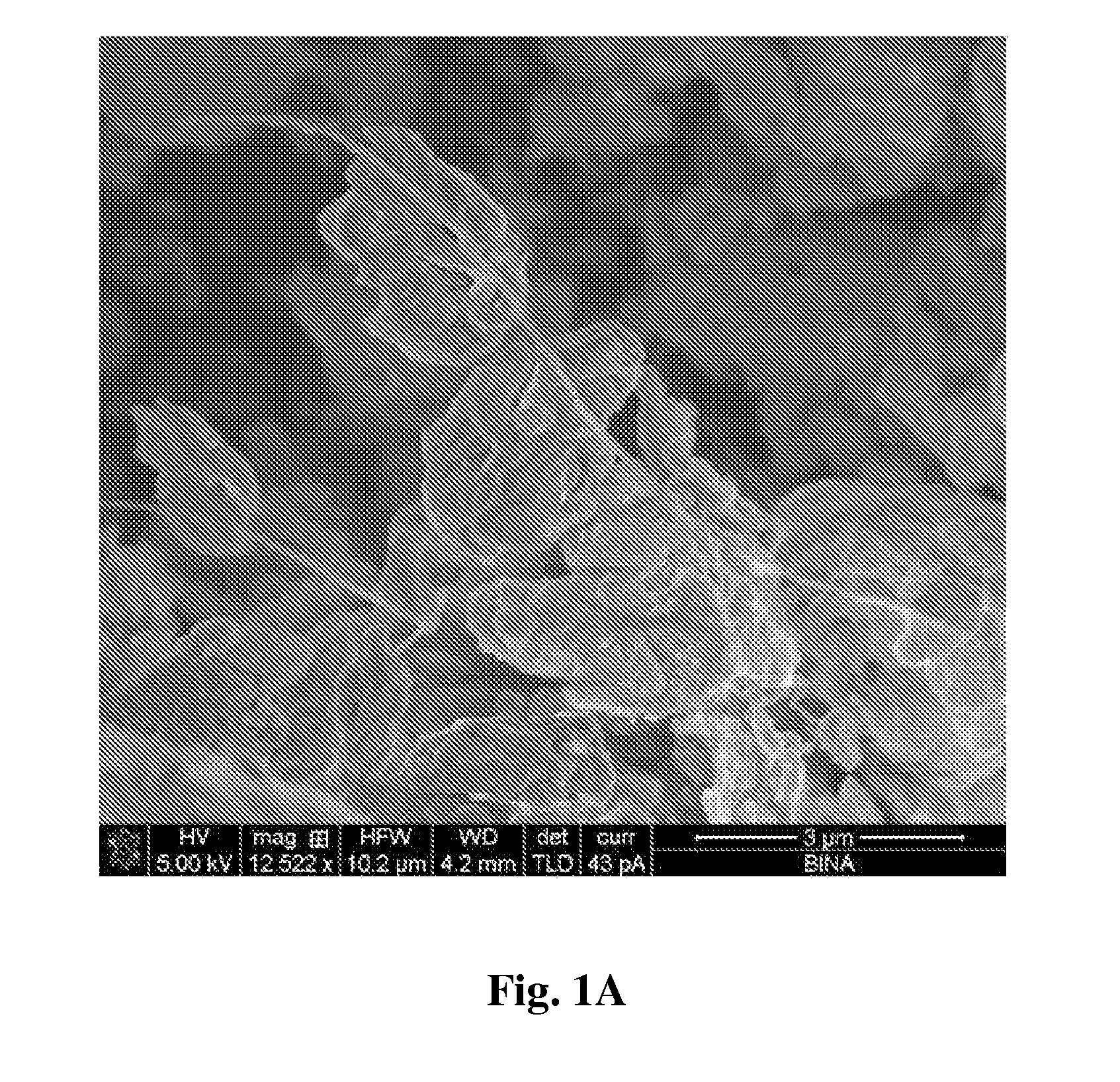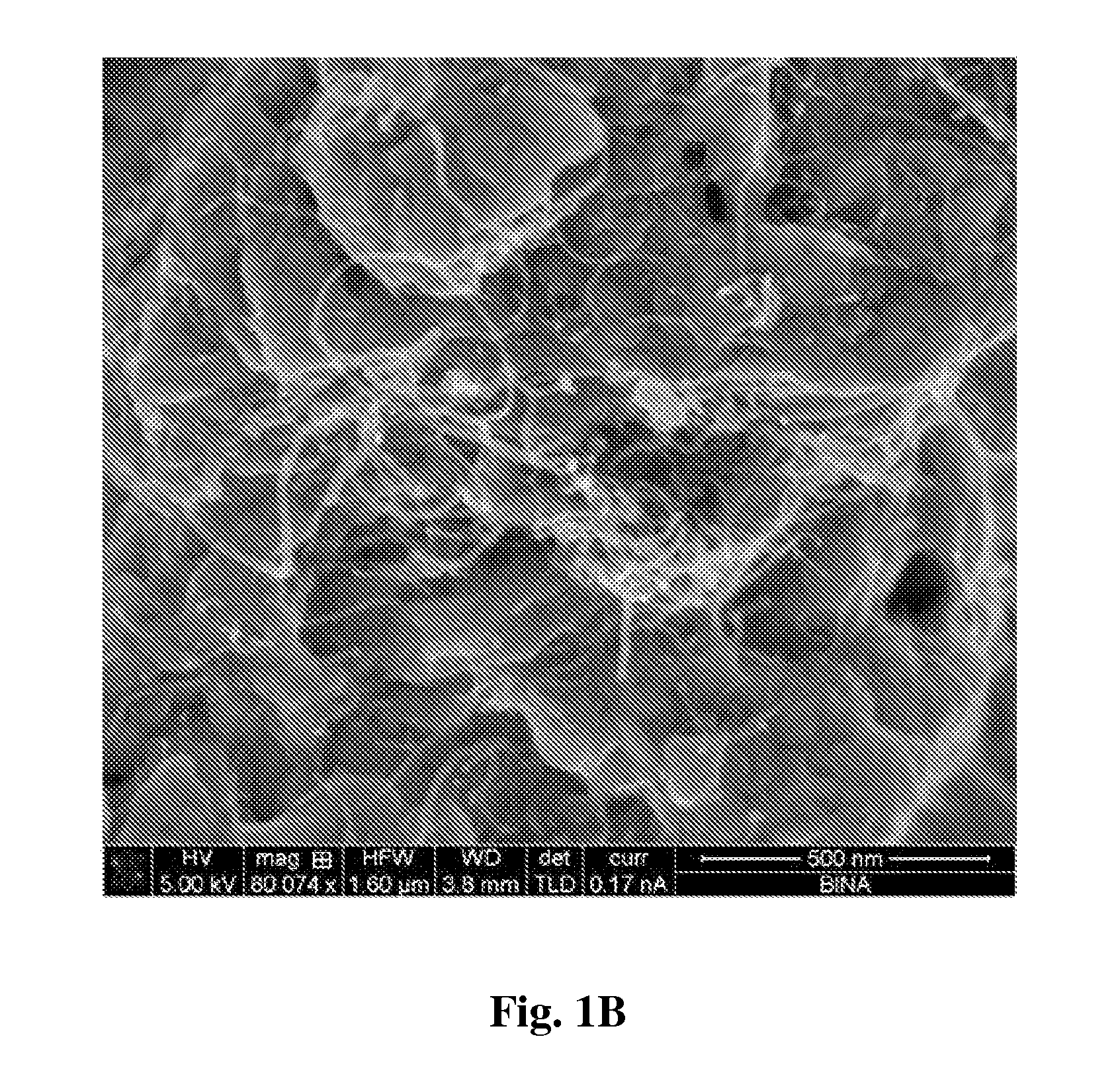Functionalized carbon nanotube composite
a carbon nanotube and composite technology, applied in the field of functionalized carbon nanotubes in lead acid batteries, can solve the problems of poor utilization of positive active materials, limited cycle life and capacity of these batteries, and low specific energy, so as to prevent or minimize creep deformation, inter-granular corrosion and cracking
- Summary
- Abstract
- Description
- Claims
- Application Information
AI Technical Summary
Benefits of technology
Problems solved by technology
Method used
Image
Examples
example 1
Polymer Functionalized Oxidized-CNTs
Preparation of Test Samples
[0078]Dispersion of the coated CNTs in the leady-oxide medium for the positive mixtures were prepared from lead oxide (LO) produced by the Vulcan Plant in Israel, 0.2 wt. % Dynel®⅛ (a copolymer of acrylonitrile and vinyl chloride), and 1.0 wt. % coated CNTs. The coated CNTs (NanoAmor MWCNT, 8-15 nm diameter, 10-50 μm length) were covalently coated with polythiophene acetic acid (PTAA), as described by Lellouche [8]. The mixtures were sonicated in a tip sonicator (750W) for 30 minutes with acetone as a conjugating agent.
[0079]Alternatively, viscous LO powder (containing small amounts of water) and oxidized MWCNT (Arkema, 1-10 μm length, see characterization in [12]) were mixed by planetary centrifugal mixing at 2000 rpm for 2 min followed by admixing with of 0.2 wt. % Dynel®⅛. The oxidized MWCNT were produced by chemical vapor deposition method with diameter of 20-40 nm. 3 g portion of MWCNTs were added to 125 ml of 4M ac...
example 2
CNTs Functionalized by Oxidation
Preparation of Reference Cells
[0098]Both positive and negative electrodes were prepared from leady oxide (LO, i.e. a mixture of PbOx with 1≦x≦2) which was produced in a commercial Barton pot by Vulcan Inc (Israel, a LA batteries manufacturer). For the positive electrode mixture, LO was mixed with Dynel® 1 / 8 (0.2 wt. % vs. the LO). For the negative electrode mixture, LO was mixed with Dynel® 1 / 16 (0.06 wt. % vs. the LO) and an expander consisting of BaSO4 and carbon black (0.75 wt. %—vs. the LO; VULCA01 by Hammond;). During mixing, distilled water (150 μg / g LO powder) and H2SO4 (16 μl / g LO powder; 1.84 sp.gr.) were added to both positive electrode mixture and negative electrode mixture to form respective pastes.
[0099]After short stirring and waiting for one hour at room temperature, 3 g of the positive electrode mixture and 10 g of the counter negative electrode mixture were manually pasted on lead grids (4 and 10 cm2 respectively; 1.3 mm wide), which ...
PUM
| Property | Measurement | Unit |
|---|---|---|
| particle size | aaaaa | aaaaa |
| particle size | aaaaa | aaaaa |
| length | aaaaa | aaaaa |
Abstract
Description
Claims
Application Information
 Login to View More
Login to View More - R&D
- Intellectual Property
- Life Sciences
- Materials
- Tech Scout
- Unparalleled Data Quality
- Higher Quality Content
- 60% Fewer Hallucinations
Browse by: Latest US Patents, China's latest patents, Technical Efficacy Thesaurus, Application Domain, Technology Topic, Popular Technical Reports.
© 2025 PatSnap. All rights reserved.Legal|Privacy policy|Modern Slavery Act Transparency Statement|Sitemap|About US| Contact US: help@patsnap.com



